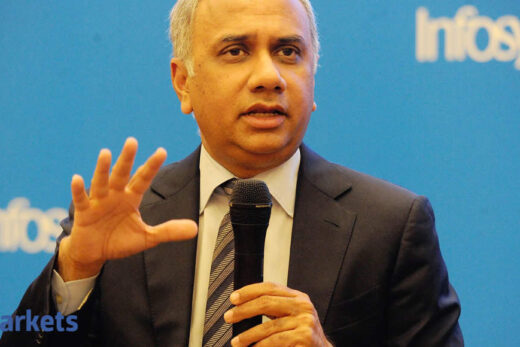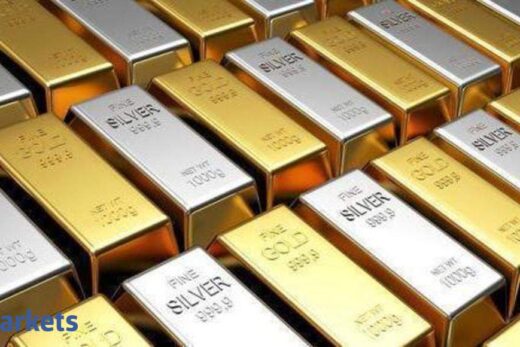Another quarter where the multiyear high steel prices and spreads have elevated quarterly numbers to record levels. But since the month of June domestic steel prices have been falling. What has your observation been and what is July pricing policy like?
There are some corrections which have happened in the month of June mostly associated with seasonally subdued quarter, but notwithstanding whatever we are seeing right now in the market. Overall, the supply has substantially increased globally. If I see the first six months of the calendar year, the total production that has come over the last year is almost 126 million tons of more production. But what is important to note is that in spite of very good supply of 126 million tons, which is a growth of 14% over the last year, the prices in the first half in the US went up by 40% and even in Europe to a similar range.
Prices are going up. That clearly is indicating that the demand is reasonably strong. Whatever corrections we are seeing right now is mostly seasonal in my view. The cost push is also very strong, which we have seen in the last quarter. Iron ore prices went up in India by 52%, whereas quarter-on-quarter globally it went over 30% and the coking coal prices went up by 75%. There is a very strong cost push. Notwithstanding the increase in supply because of the very strong demand that is across the world and also the cost push together, I do not expect a very big correction in the steel prices. Some correction cannot be ruled out.
While your June quarter auto steel sales have been strong, the demand has been weakening especially in the key auto segments. Help us understand what exactly is the situation on ground.
As I mentioned to you the demand seasonally is weak generally in July and September quarter, but from June onwards relative to April and May we are seeing definite signs of improvement which has also got reflected by way of higher demand pick up in the power consumption and appliances. Also in the tractors and motor vehicles and residential construction side we are definitely seeing some improvement over April and May.
It is a matter of time because of the monsoon, the construction activity will be very subdued during this quarter. We could see some slowdown in the overall demand, but once the monsoon gets settled and once festive season comes, demand will pick up. But globally, I am seeing very good demand coming up. So, we are not seeing a big correction in the steel prices both in the US and Europe even though some correction in the Asian markets.
What is happening on the export front given that there is a seasonality which has kicked in?
It may not be possible for all the producers to go for exports. We have been there in the export market for several years. We are able to increase the supplies in the export markets if there is any weakness or subdued demand in the domestic market. If you see in the last quarter, our exports were 35% of the total sales. I think we will operate our plants at full capacity and then if there is weakness in the domestic demand, particularly the downstream value-added products, there is a very good demand in the international markets. We will be able to export them. Number two, the export realisations as on date are better than the domestic prices, but the last one year’s trend, if you see the domestic prices are always at a discount to the landed cost at the ports or they are tracking a little lower than what the global prices are.
How is the uptick in coking coal prices impacting you as prices have gone by 75%?
There is always a gap between what they announce and what is actually happening on the ground. If I see the first six months of this calendar year, China has produced 504 million tonnes which is 59 million tonne more than the corresponding year of last year where their policy says that in this year, they want to limit the production to that of last year. Whereas it is already 60 million tonnes more they have produced above last year.
Then look at exports. The exports in the first six months of the year from China was 37 million tonnes against 28 million tonne of last year. So, their exports were higher and the production was higher than last year. Therefore, there is always a gap between what they are driving and what is happening on the ground. That is what we have to watch. Maybe one indication was that in the month of June the production was down to 93.5 million tonne compared to 99 million tonnes in the month of May.
So, month on month it has come down but if I look at the first six months of the year compared with the previous year, there is a substantial increase in supplies. The supplies are more and there is more demand for iron ore, more production, more demand for iron ore. That is why iron ore prices are not coming down and coking coal prices are not coming down. They are still at elevated levels.
What sort of pressure have you seen in commodity cost?
Definitely coking coal prices are going up, so there is a pressure on the overall cost of production. If I see even in the last quarter, our costs have gone up by 10%. Out of that majorly contributed by both coking coal and also iron ore prices. Whatever increase that has happened in the last three months and also what is right now this gets reflected partly in this quarter and partly next quarter. There will be cost pressures because of the increase in coking coal prices, so that definitely will have an impact on the margins.
You have managed to accumulate a couple of captive iron ore mines. I want to understand what cost saving will it bring for you and do you think that as you ramp up, it will help you maintain margins?
We do not guide margins. Basically, we guide the volumes. We have guided volumes in the beginning of the year; that is 18.5 million tonne production, including the production that will come from expansion and also sales side we will be able to achieve our guidance. That is how we can talk about it. As far as margins are concerned, there will be a pressure on account of the increase in coking coal prices and also iron ore prices.
Iron ore last quarter was 42% of total consumption from the captive sources. We wanted to increase to 50% plus and that is what we are working on. We are also investing to improve the quality, digitisation and mining equipment. There are lots of other things which are going on, but the benefit of that will come a little later. It may not come in this year, but our captive percentage of the total consumption that continues to be going up.
Steel cycle is doing so well. Does it make sense to diversify into a space like paints? Why are you investing in that sector?
What we realised is industrial paints is very much essential for JSW Steel to serve our customers because we need 1,600 shades of colours which we do on the steel which we produce basically to give to our customers. What our customers are looking at is an assurance and warranties for a longer period of time — 10 years to 15 years warranty on the paint which we give on the steel. So if we have to give it, we need lot of R&D to be done along with the paint producer and also do different paints and improve them and bring them in an innovative manner.
Number two is if I look at the existing paint players in India, very few of them are looking at expanding industrial paint capacities. Whereas JSW Steel has more than doubled or tripled, in fact. The capacity of the colour coded lines, earlier we used to have 7 lakh tonnes capacity. Today we will be close to 2.5 to 3 million tonnes once all the projects get completed. There is a huge amount of increase in our paint requirements.
When other players are not increasing capacity of the paints to supply to us and when we are increasing our capacity, it is very much essential to meet the requirement of JSW Steel to secure our supplies in future and also to meet our customer requirement of ensuring and assuring very high quality and warranties. I think it is essential and strategic for us to make this investment. That is why we have taken this call to do the investment and work with them for more and more improvement in the quality of the eventual product we supply to our customer.
The US operations have turned EBITDA positive because there has been a blockbuster rally in steel stocks. But will it sustain? Or is the US operations turning profitable a one off?
We have started the operations after refurbishing and revamping both Ohio and Baytown in the February and March 2021, so they picked up the capacity during the quarter. Both together have given an EBITDA of $44 billion in the last quarter. In rupee terms, all our overseas operations contributed positively to 282 crore to EBITDA as against the loss of over 300 crore in the previous quarter. That way there is a big big turnaround as far as US operations are concerned. We expect that this will not only continue but improve further from here on.
Lastly you have added another source of power — wind and solar — through an SPV with JSW Energy. How and when is it going to start and ramp up?
Definitely. For an instance, today as a part of our ESG strategy we said we will reduce our carbon emissions and increase our renewable power. Those are the guidance we have already given. In line with that we are now signing with PPS for buying 948 installed capacity of both wind and solar power which will give us two distinct advantages. As per the regulation today in some of the states, 21% of the power that we consume from fossil fuels has to be necessarily through the renewable process. In Maharashtra it is close to 10.6%. So it varies state to state.
There is an obligation on JSW Steel to buy the power from renewable sources. If it is not possible, then we have to buy the IEC certificates in the market. Then again you have to pay. That means when we consume the power from fossil fuel, you have to pay higher price for the power, plus you have to buy the REC certificates in the market. Instead, by entering into this buying of renewable power, the cost of renewable power is lower than the fossil fuel power. Number two, there is a significant advantage in terms of procuring on a long-term basis with the renewable power.



